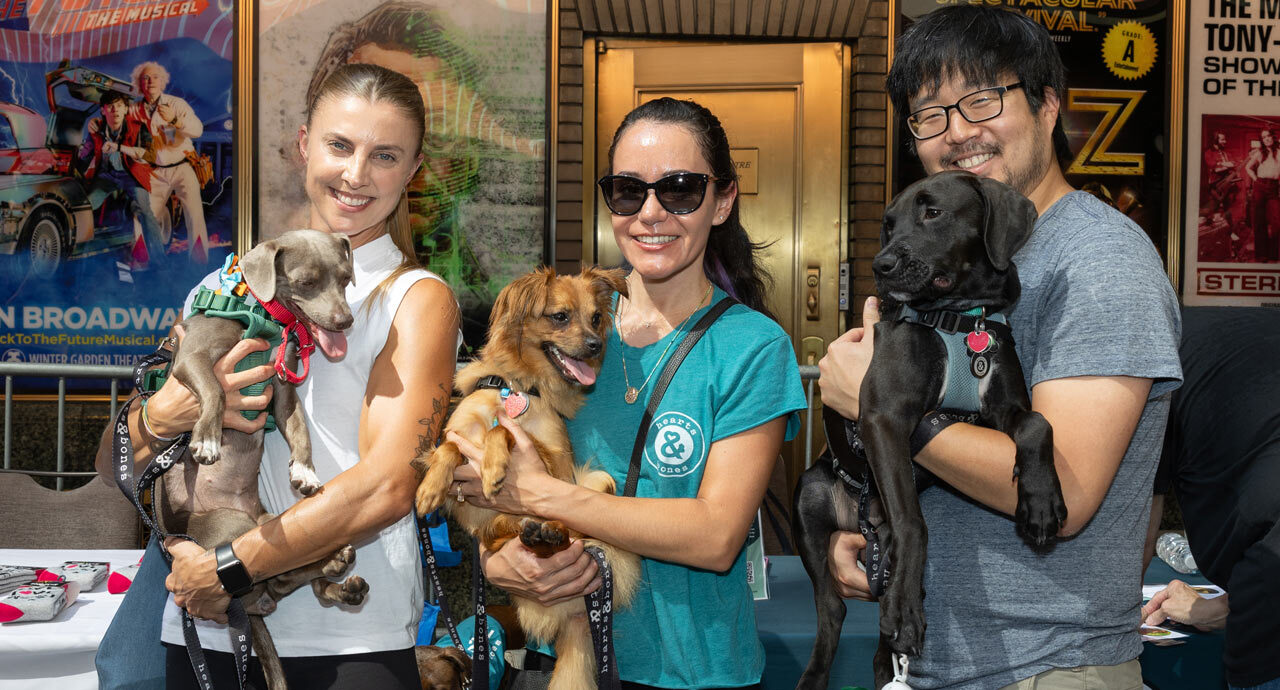
The Red Ribbon and Broadway Cares
 The gesture of wearing a simple red ribbon to honor those battling AIDS first gained national prominence when actors at the 45th Annual Tony Awards pinned them to their tuxedos and gowns.
The gesture of wearing a simple red ribbon to honor those battling AIDS first gained national prominence when actors at the 45th Annual Tony Awards pinned them to their tuxedos and gowns.
Now, 20 years later, the red ribbon is the most enduring symbol of a crisis that continues to mercilessly strike men, women and children. To mark the 20th anniversary of the red ribbon, the Visual AIDS Artists’ Caucus, which created the first ribbon, commissioned four artists to design unique “Not Over” buttons that will be attached to red ribbons and distributed across the country for World AIDS Day in 2011.
Broadway Cares/Equity Fights AIDS was instrumental in the proliferation of the original ribbons and still today freely distributes more than 200,000 each year. Broadway Cares also will distribute the “Not Over” buttons at the 23rd annualGypsy of the Year in December.
“We’re honored to have helped increase awareness of such an extraordinary, historic symbol,” said BC/EFA Executive Director Tom Viola. “Once the red ribbons were seen on the Tonys and other awards shows, the demand sky-rocketed. The phone was ringing off the hook with requests from AIDS service organizations, events and groups of every variety. We ordered hundreds, ultimately thousands, of boxes so that we could fulfill the demand for free, as we still do.”
The ribbons were born out of a group of artists who came together to create a meaningful symbol at the height of the AIDS crisis. These artists were a part of the Visual AIDS Artists’ Caucus and they created “The Ribbon Project,” better know today simply as “the red ribbon.”
Inspired by the yellow ribbons used to support U.S. troops in the Gulf War, the red ribbon was selected for its “connection to blood and the idea of passion – not only anger, but love, like a valentine.” The ribbon format was selected in part because it was easy to recreate and wear. The instructions were simple: “cut the red ribbon in 6-inch length, then fold at the top into an inverted ‘V’ shape; use a safety pin to attach to clothing.”

In the tradition of the original ribbon bees, volunteers in the past few months, have come together to assemble ribbons with the “Not Over” buttons, which were designed by A.K. Burns, John Chaich, Joe De Hoyos and Avram Finkelstein.

The Tony Awards were chosen in 1991 as a way to demonstrate the extent the epidemic was affecting artists and performers. The red ribbon quickly became renowned as an international symbol of AIDS awareness and has been worn at the Oscars, Emmys, Grammys and dozens of other awards shows, and at virtually every type of event, from talk shows to political conventions, sporting events to music videos.
The red ribbon was the first “awareness” ribbon, later followed by many other colors and causes. The red ribbon has been used by many AIDS service organizations for its universal recognition and has been written about in several publications and articles. In 1993 a 29-cent red ribbon stamp was issued by the United States Post Office. The red ribbon was honored by the Council of Fashion Designers of America in 1992 for its design and iconic power. In 1997, the red ribbon was included in the exhibition “Design for Life” at Cooper-Hewitt National Design Museum and is included in the permanent collection at the Museum of Modern Art and featured in the exhibition “Humble Masterpieces.”
The ribbon has never been copyrighted in the United States, to allow it to be worn and used widely as a symbol in the fight against AIDS. By keeping the image copyright free, no individual or organization would profit from the use of the red ribbon, which would be used then as a consciousness-raising symbol, rather than as a commercial or trademark tool.
“In making it possible for anyone to create a red ribbon we have seen everything from $40,000 ruby pins from Tiffany’s to the symbol on everything from cocktail napkins to condoms and T-shirts as well as one ultimately hanging from the South Portico of the White House,” Viola said. “Its very flexibility has resulted in what is now an indelible international symbol.”
The “Not Over” buttons will be distributed to the audience at both Gypsy of the Year performances December 5 and 6. They are not available through the Broadway Cares Online Store. For more information on the buttons, visit VisualAIDS.org or email info@visualAIDS.org. Buttons will be available from Visual AIDS while supplies last.


